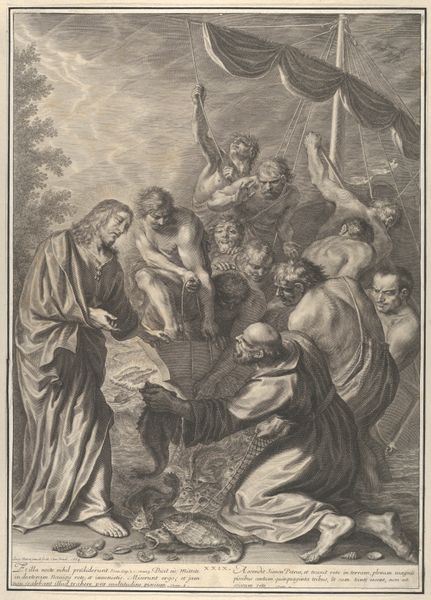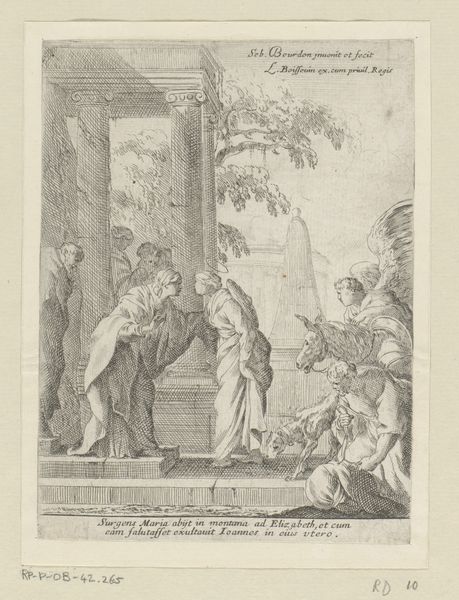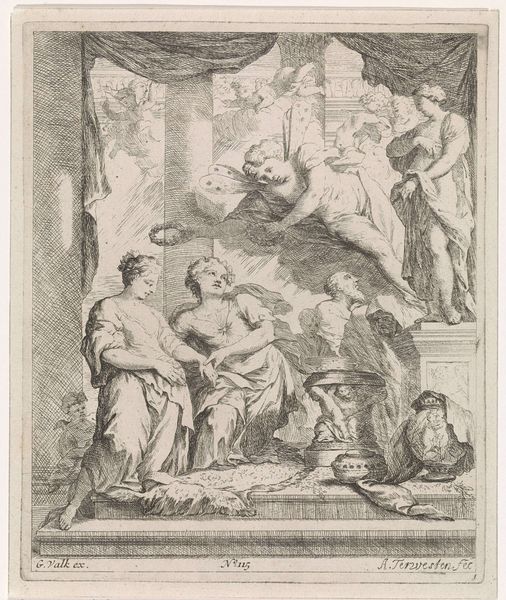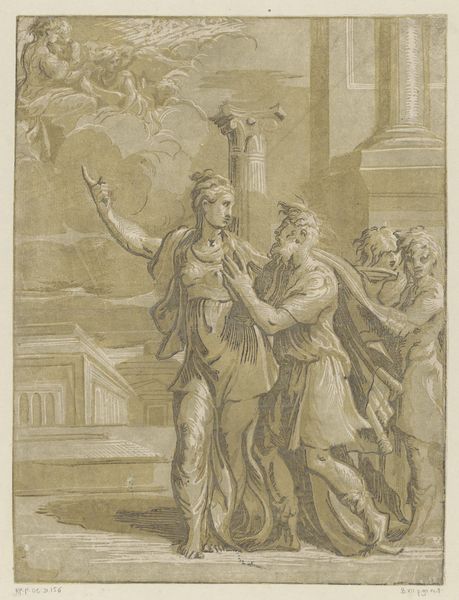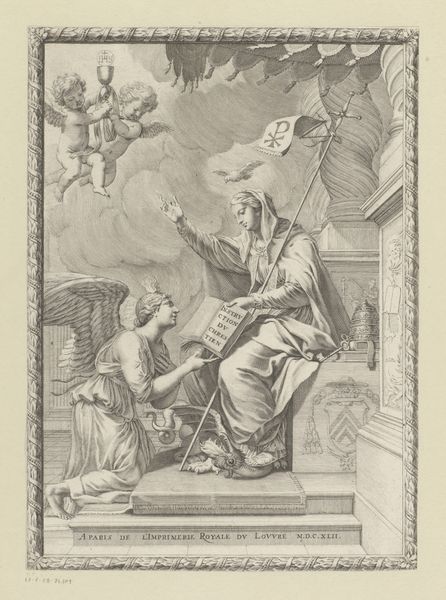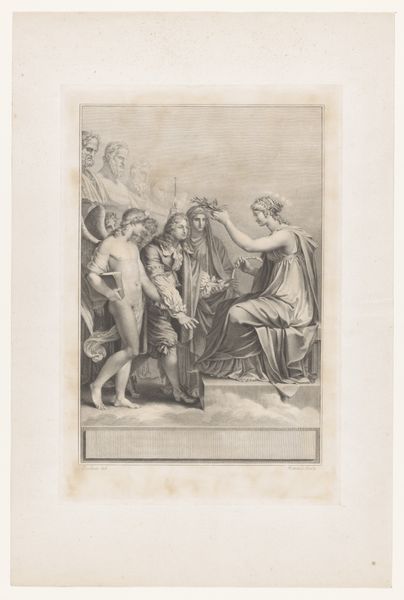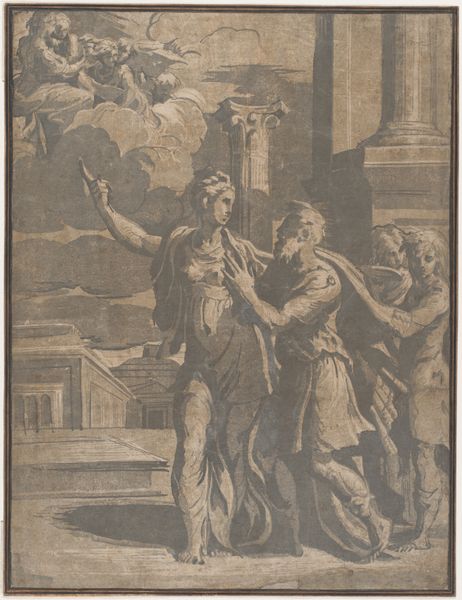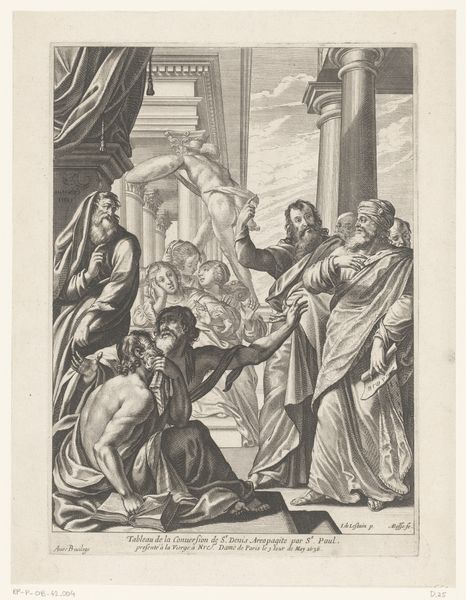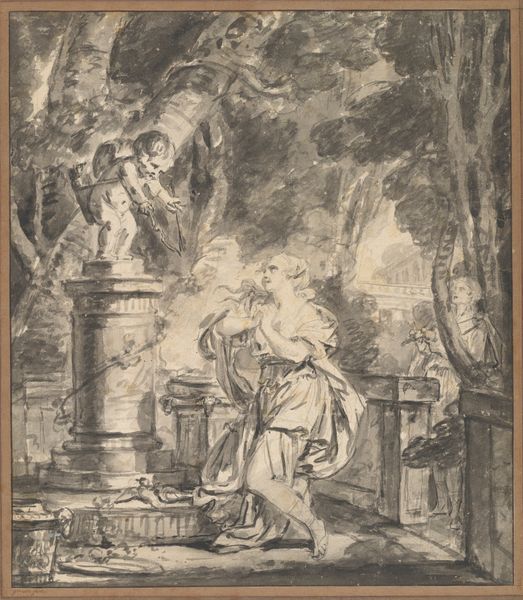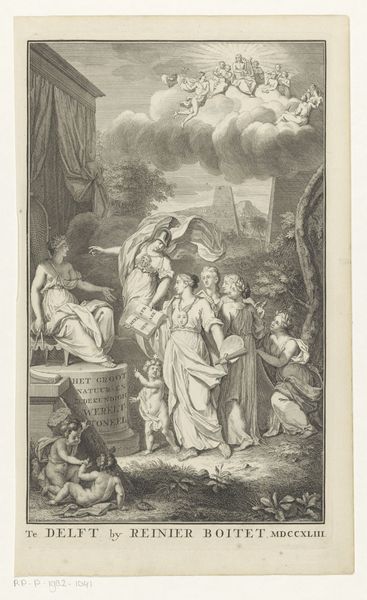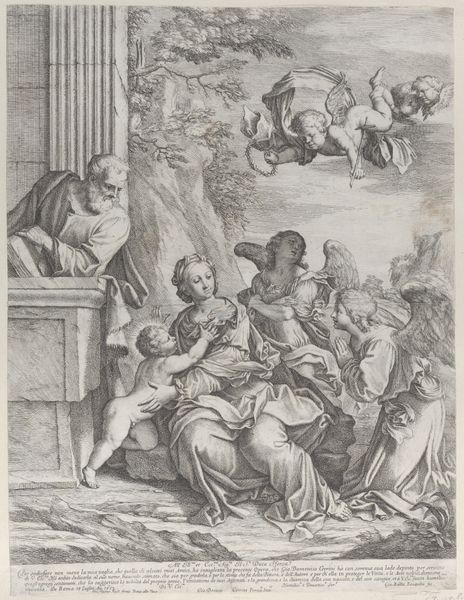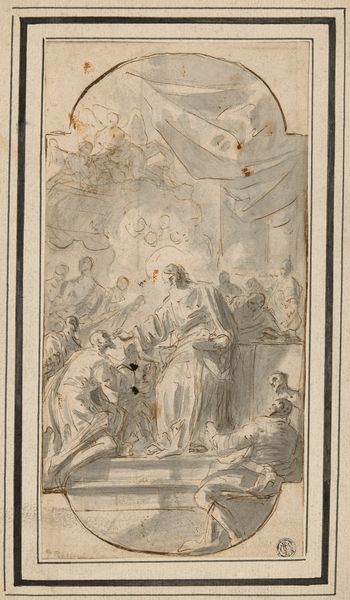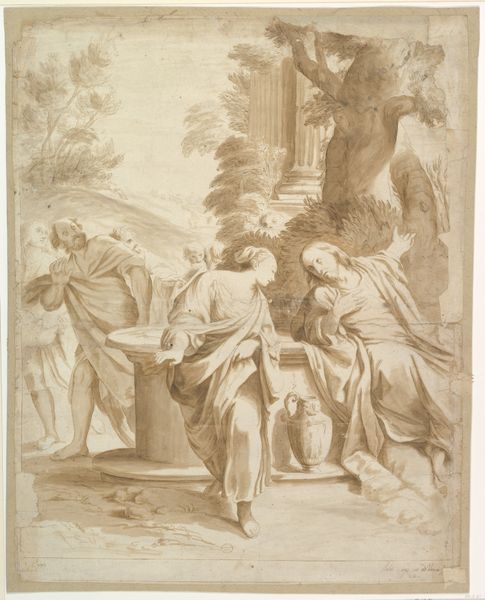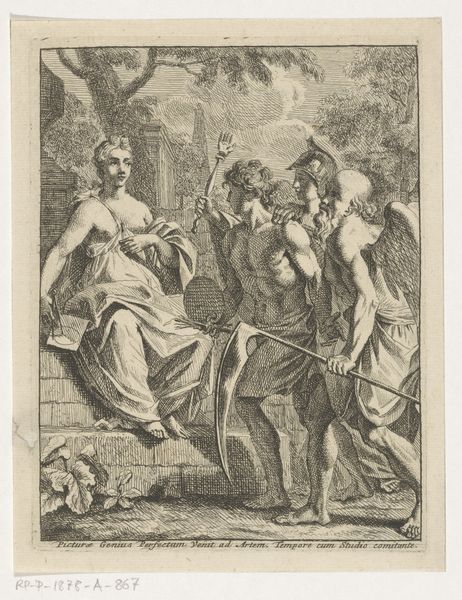
Pallas Athene in the Form of a Bird Leaving Nestor and Telemachus c. 1780
0:00
0:00
drawing, paper, pencil
#
drawing
#
allegory
#
narrative-art
#
pencil sketch
#
classical-realism
#
figuration
#
paper
#
form
#
pencil drawing
#
coloured pencil
#
classicism
#
ancient-mediterranean
#
pencil
#
line
#
history-painting
Dimensions: overall: 29.5 x 21.9 cm (11 5/8 x 8 5/8 in.)
Copyright: National Gallery of Art: CC0 1.0
Editor: This delicate pencil drawing, "Pallas Athene in the Form of a Bird Leaving Nestor and Telemachus," from around 1780 by Jean Jacques François Le Barbier, presents a scene steeped in Classical realism. The muted tones create a very somber mood, while the dynamic poses of the figures hint at drama. What can you tell me about its cultural context? Curator: The choice of subject matter immediately tells us something about the cultural moment. The late 18th century saw a renewed fascination with classical antiquity. This wasn't just about aesthetics; it was tied to Enlightenment ideals, where ancient Greece and Rome were seen as models of civic virtue and rational thought. How might this inform Le Barbier's intention? Editor: So, the artist is not just depicting a scene but perhaps suggesting something about leadership or the virtues needed at the time? Curator: Exactly! Look at the composition – Pallas Athene, a symbol of wisdom and strategic warfare, departing as a bird. The implication is that even divine guidance is fleeting, perhaps suggesting that Nestor and Telemachus must now rely on their own judgement. Consider also who would commission or collect such a piece. What social class is this meant for? Editor: Likely the educated elite who would recognize the reference to the Odyssey and appreciate its message of self-reliance, right? Also, history painting gained prominence with the rise of academies and public exhibitions. Curator: Precisely! This drawing wasn't just meant to be admired privately; it participated in a broader cultural discourse. So, the artwork's role extends beyond mere illustration to become a tool for shaping social and political thought. I wonder what a contemporary audience would have made of Athene's departure. Editor: It’s interesting how a seemingly simple drawing can reveal so much about the social and intellectual climate of its time! I’ll never look at classicism the same way again. Curator: And that’s precisely the point of art, isn’t it? To make us question and re-evaluate the world around us and our own place in history.
Comments
No comments
Be the first to comment and join the conversation on the ultimate creative platform.
